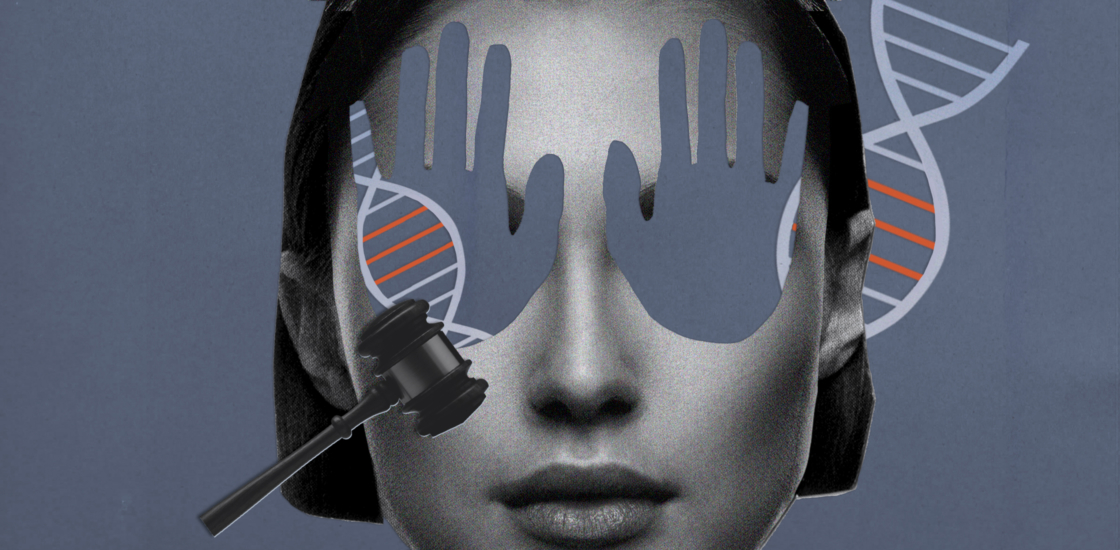Patent on autism genetic test may stifle science
A patent on variants in an autism gene is unlikely to hold up in court, but may still hinder research, some experts say.

A new patent on variants in an autism gene is unlikely to hold up in court, some experts say, but may still hamper research.
In December, LabCorp, a healthcare diagnostics company in Burlington, North Carolina, received a patent that appears to cover any test that can identify three variants in the gene HOMER1. The patent relates to the testing of these variants to signal an increase in autism risk in a child or fetus.
But the patent might also allow LabCorp to charge a licensing fee to any scientists who wish to sequence HOMER1 in people who may have autism.
The patent revives a debate that many scientists hoped was behind them. In 2013, in response to the controversy over a breast cancer gene patent, the U.S. Supreme Court ruled that genes cannot be patented.
“Gene patents restrict access to genetic tests; they restrict access to confirmatory testing and second opinions; they squelch sharing of data and they squelch research,” says James Evans, who headed a government advisory task force on the impact of gene patents. “That should be a settled issue, so it’s very depressing to see that at least in some people’s minds, it’s not.” Evans is professor of genetics and medicine at the University of North Carolina at Chapel Hill.
By itself, the HOMER1 test is unlikely to have much clinical value. The gene is a member of a signaling pathway related to autism, but is only weakly linked to the condition. And mutations in any one gene contribute to only a small proportion of cases.
Still, the existence of the patent could pose a roadblock to anyone who finds variants in HOMER1 in their sequencing projects or includes HOMER1 among a panel of several genes linked to autism.
“Companies that are providing clinical diagnostics on the HOMER1 gene have every reason to be skittish about performing those sequences because of this patent out there,” says Jacob Sherkow, associate professor of law at New York Law School.
LabCorp did not respond to queries about its plans for the patent. “We have no information available with respect to the patent in question,” Donald Von Hagen, the company’s vice president of corporate communications, told Spectrum. But, he said, “a test for autism spectrum disorder would provide parents and patients with valuable information, which could be used to support earlier diagnosis and initiation of focused care.”
Early days:
The patent for the HOMER1 test originated with a company called Correlagen Diagnostics, based in Westborough, Massachusetts. In 2009, Correlagen sought patent protection for detection of a variant in any of 19 genes, including the autism candidates FMR1, MECP2 and SHANK3. At the time, Correlagen researchers planned to launch a genetic test that included several variants linked to autism, says David Margulies, an inventor on the patent and then-chief executive officer of Correlagen.
LabCorp bought Correlagen in 2010. The most recent filing of the patent, from 2014, is narrower; it relates to three variants in HOMER1, either in isolation or in conjunction with variants in the 18 other genes.
The scientific basis for the patent is a study that identified variants in the metabotropic glutamate receptor (mGluR) pathway in people with autism1. “We were hedging our bets,” by pegging members of this pathway as possible strong autism genes, says Mark Bear, professor of neuroscience at the Picower Institute for Learning and Memory at the Massachusetts Institute of Technology.
Bear is listed as an inventor on the HOMER1 patent. He says the patent was intended to identify people most likely to benefit from drugs that target the mGluR pathway. But he told Spectrum he had forgotten all about it and is “perplexed” as to why LabCorp has continued to pursue it.
Legal ease:
Case law suggests that the patent is unlikely to hold up to a challenge in court, Sherkow and others say. In 2013, the U.S. Supreme Court overturned patents that gave Salt Lake City, Utah-based Myriad Genetics exclusive rights to sequence the BRCA1 and BRCA2 genes, which greatly increase the risk of breast cancer. The court allowed Myriad to retain a patent on its method for detecting mutations in the genes, however.
The new patent similarly covers a method, but likely runs afoul of another Supreme Court decision: In a 2012 case, Mayo Collaborative v. Prometheus Labs, the Supreme Court ruled that companies cannot patent a “law of nature” identified using “well-understood, routine, conventional activity previously engaged in by researchers in the field.”
The method in the new patent involves routine activity: It involves extracting DNA from an individual and using one of three common methods to detect variants in a gene.
“The claims [in the patent] are not specific to any particular way of detecting these mutations in the HOMER1 gene,” Sherkow says. “The Mayo decision pretty strongly suggests that this patent may not be valid.”
In 2016, a federal court relied on the Mayo precedent to invalidate four patents held by LabCorp, which covered standard techniques for detecting variants in cancer genes.
LabCorp has previously sued companies it believes infringed on similar patents, but it is unclear whether it will attempt to enforce the HOMER1 patent.
References:
- Kelleher R.J. 3rd et al. PLOS ONE 7, e35003 (2012) PubMed
Syndication
This article was republished in The Scientist.
Recommended reading

New organoid atlas unveils four neurodevelopmental signatures

Glutamate receptors, mRNA transcripts and SYNGAP1; and more

Among brain changes studied in autism, spotlight shifts to subcortex
Explore more from The Transmitter
Can neuroscientists decode memories solely from a map of synaptic connections?

AI-assisted coding: 10 simple rules to maintain scientific rigor
